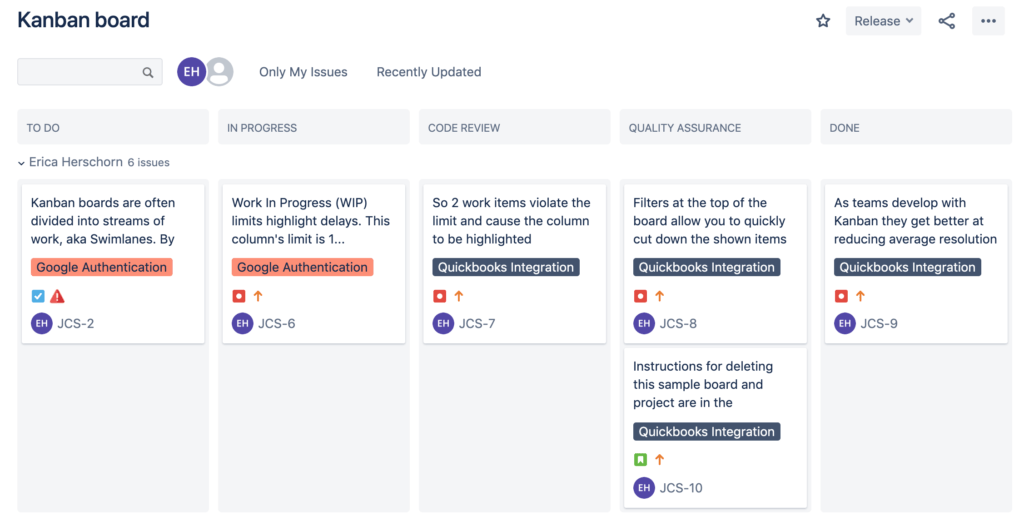What is a Kanban board?
Think of a Trello board:
- It has a collection of cards that represent tasks needing to be done
- It has columns which identify the current status of the card
- Cards are moved from column to column as they progress
- The last column represents cards that are done

Thats about it! Simple, right?
The challenge begins when trying to decide if it is the right style of board for your team.
When should I use a Kanban board?
Generally when deciding what board to use for my team, I will ask myself a few questions.
Question 1: Are my team’s priorities changing so regularly that I am not able to plan at least one week’s worth of work in advance?
This question is the primary factor when deciding whether or not to proceed with using a Kanban board.
In an ideal scenario, we are able to plan out at least one week’s worth of work for our teams. In certain situations, this isn’t possible; for example, this happens most regularly at the end of a project, during final testing, and right before launch. In this scenario, Kanban boards work beautifully to address urgent feedback as it comes in from stakeholders.
So if the answer to this question is “yes” and your team’s priorities are changing day-by-day (or hour-by-hour), a Kanban board might be a great option.
If the answer is “no” and your team’s priorities are firm enough that you can successfully anticipate at least one week’s worth of work for your team, then a Kanban board might not be the best solution for your team.
Question 2: Will I have the opportunity to meet with my team daily to plan out that day’s tasks?
Question 2 holds less weight than question 1, but is nevertheless important. When priorities are constantly changing, then you will need the chance to communicate the shifting priorities to your team; a daily stand-up meeting is often the best way to do so.
If the answer is “yes” then you are well on your way to a successful Kanban project.
If the answer is “no”, then formulating a communication plan for shifting priorities might be a next step before implementing your board.
Question 3: Will constantly shifting priorities significantly reduce my team’s morale?
Team happiness can be a major factor when deciding how to proceed. Some individuals may not like the idea of priorities changing regularly and it may cause them some distress. For example, a team member may be asked to work on task “A” for one day, and before finishing, be asked to switch to task “B”, which is now more “urgent”. If you foresee your team members becoming frustrated with shifting priorities, then the Kanban style of board might not work so well for you.
I like to ensure I take my team’s morale when deciding if I will be proceeding with a Kanban board.
Question 4: How long do I anticipate this board needing to be used for?
As a general rule, a Kanban-style project can work well for projects that are short-term, at a maximum of around one to three months in duration. Any project that is longer than three months will likely work better on a sprint-style board with more predictability than a Kanban board.
For short-term projects with frequently changing priorities, Kanban boards can work very well (as long as your team is prepared for it)!
Additional reading:
> Learn more about team velocity in Understanding Scrum team velocity
> Learn how to design and create a Jira workflow in How do I design and create a Jira workflow

Leave a Reply